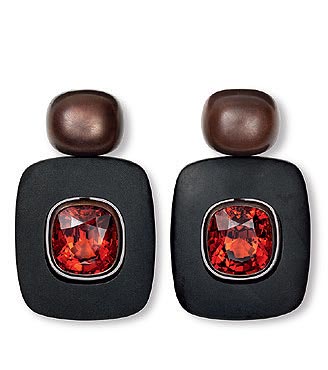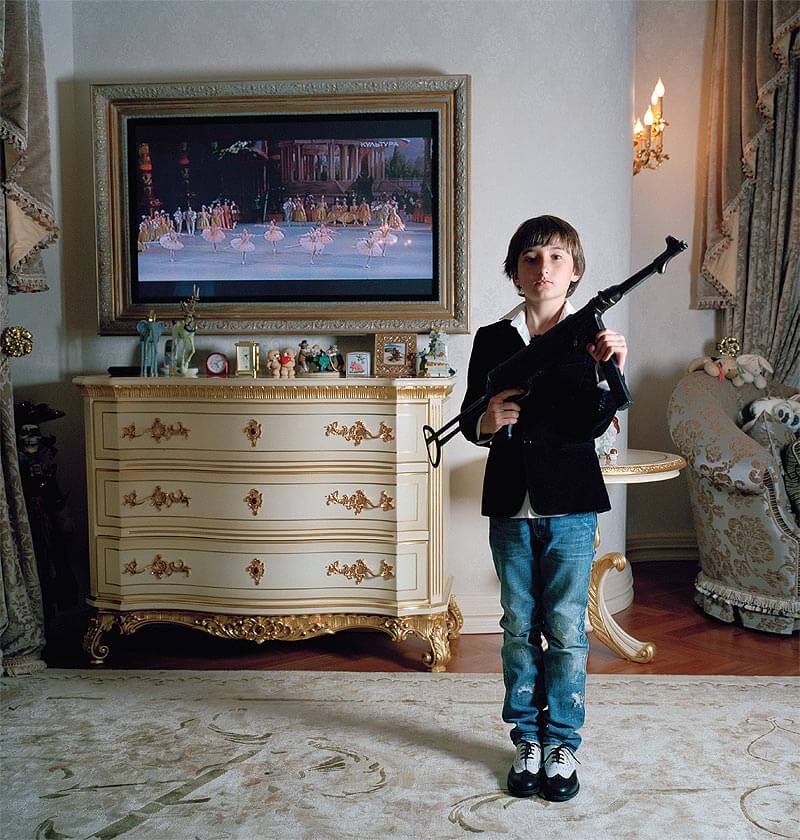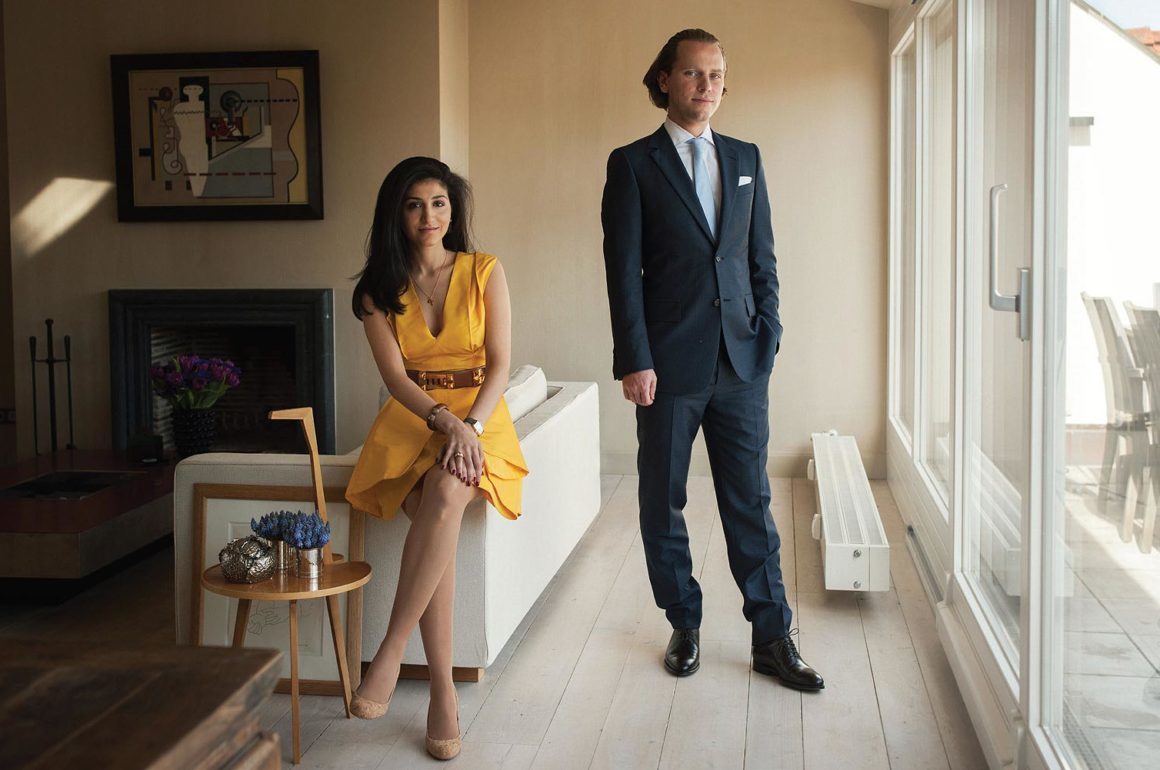-

-
In The Atelier – Hemmerle innovates by using materials such as copper, iron and even wood
-

-
Hemmerle incorporates contemporary materials, such as copper in this piece
-

-
Never boring, expect subtle surprises such as mismatched earrings
-

-
Beautifully carved antique cameos feature regularly in the brand’s collections
-

-
Nature Inspired – This ring features a carved band resembling the pattern of an acorn cap
-

-
New Era – Hemmerle embraced the minimalist movement of the ’90s by adopting a modernist aesthetic
-

-
Every piece is handcrafted and can take over 500 hours to complete
They may have begun by bejewelling Bavarian royalty, but Hemmerle is far from being a throwback. CAROLINE DAVIES speaks to the family-owned German jeweller about breaking the rules
It is October in Munich. I am nestled in a wooden booth in a “traditional” Bavarian inn, erected 15 days previously. Oktoberfest songs blare from painted speakers, echoed by the swaying crowd. Our table is laden with sausages, roasts, apple sauce and several half-finished litre glasses of fine German beer.
“First time at Oktoberfest?” Seated to my right is my host, Christian Hemmerle. He also happens to be the next generation of fine jewellers. Hemmerle jewellers is a Munich dynasty. Founded in 1893 by Joseph Hemmerle, Christian’s great-grandfather, the company has been decorating Europe since they won the warrant to produce medals for the Royal Bavarian court. They even occupy the same spot on Munich’s Maximilianstrasse as they did in 1904. Yet there is nothing staid about Hemmerle.
Today the company is renowned as one of the most innovative jewellery houses in the world, setting rare precious stones into copper, iron, steel, bronze and even wood. The end result is elegant, but minimal. The textures and colours, simply but smoothly arranged, make for tactile and unique pieces. Their one store, an understated glass façade on a street crammed with designer labels, is a favourite for art world impresarios including New Yorker Beth Dewoody.
“We definitely have a tendency towards art more than other manufacturers,” says Christian, shouting over the trombone. “We are just not afraid of doing something unusual.
“My father realised that there was a strong need for understatement. People in the 1980s had very grand jewels. They were getting them out once a year for a gala event, but the jewels were not incorporated in their daily lives.”
In 1995, Christian’s father, Stefan, tried something that would send a shiver down some fine jewellers’ spines. He set a diamond in iron. “My father realised that with these new materials and new possibilities you can make something much more wearable,” says Christian.

Christian Hemmerle and his wife Yasmin
Hemmerle remains a family company. Stefan and wife, Sylveli, continue to manage the business alongside the dapper couple, Christian and his wife Yasmin. Perched neatly at the table, dressed in a traditional Bavarian dress, white blouse and green corseted top, Yasmin has been fully enveloped in the fold. Originally from Egypt, she once worked at a diamond dealer in Paris, long before she met Christian.
“I always knew I had a passion for jewellery,” she says. “But I never knew why. I think it was meant to be.”
The creative process is a collaboration.
“We start with a stone,” says Christian. “There is a momentum, having these two generations together. We bring out the maximum creativity in one another. We sit around a table and criticise it until, by the end, it is a perfect thing.” It wasn’t always destined to be like this. Raised surrounded by jewels, Christian was uninterested.
“After school I wanted to get involved with real estate,” he says. “I couldn’t have imagined starting to work for the family business at that time.
“It was a very sudden change. I wanted to go to New York and my studies required me to find a work place for six months. I called my father, because it was short notice. He said, ‘I can help, but the bitter pill is that it has to be in my industry because those are the people I can call on.’
“I worked for a very small diamond dealer’s firm and I really fell in love with it on the first day. It was doing something natural. Working with precious jewels felt so normal.”
None of the Hemmerle team are nervous around priceless stones. It is unlikely many of their designs would have made it past the first sketch if they were.
“I like to think of myself as someone who pushes boundaries,” says Christian. “A lot of people only do things that have been done before because that is the way it has always been. I like to be innovative and try something new, to try to optimise.”
Creating something new requires an understanding of the old. Hemmerle’s workshop is particularly unusual for its glass beading technique, the 200-year-old skill of ‘sorting and knitting’. The work is so detailed, stones appear as though they are woven together, without a visible binding “
I want you to realise there is engineering behind it but you don’t need to see it,” says Christian. “I want to see the beauty of the piece. It should be beautiful at first sight. Love at first sight.”
Particularly popular with the art world, Hemmerle’s understated pieces are a collector cult.
“I’ve heard stories of people bonding over it at dinner parties,” says Yasmin. “They recognise a brooch or a bracelet from across the room. It’s a good conversation point because many of our clients are very passionate about it.”
“Some people would call it daring,” says Christian. “Others would say we are crazy.
“But there are other people who think the same way as we do and are very supportive of our work. We make so few pieces that we want to attract people that feel the same way about beauty as we do.”
hemmerle.com


























Recent Comments